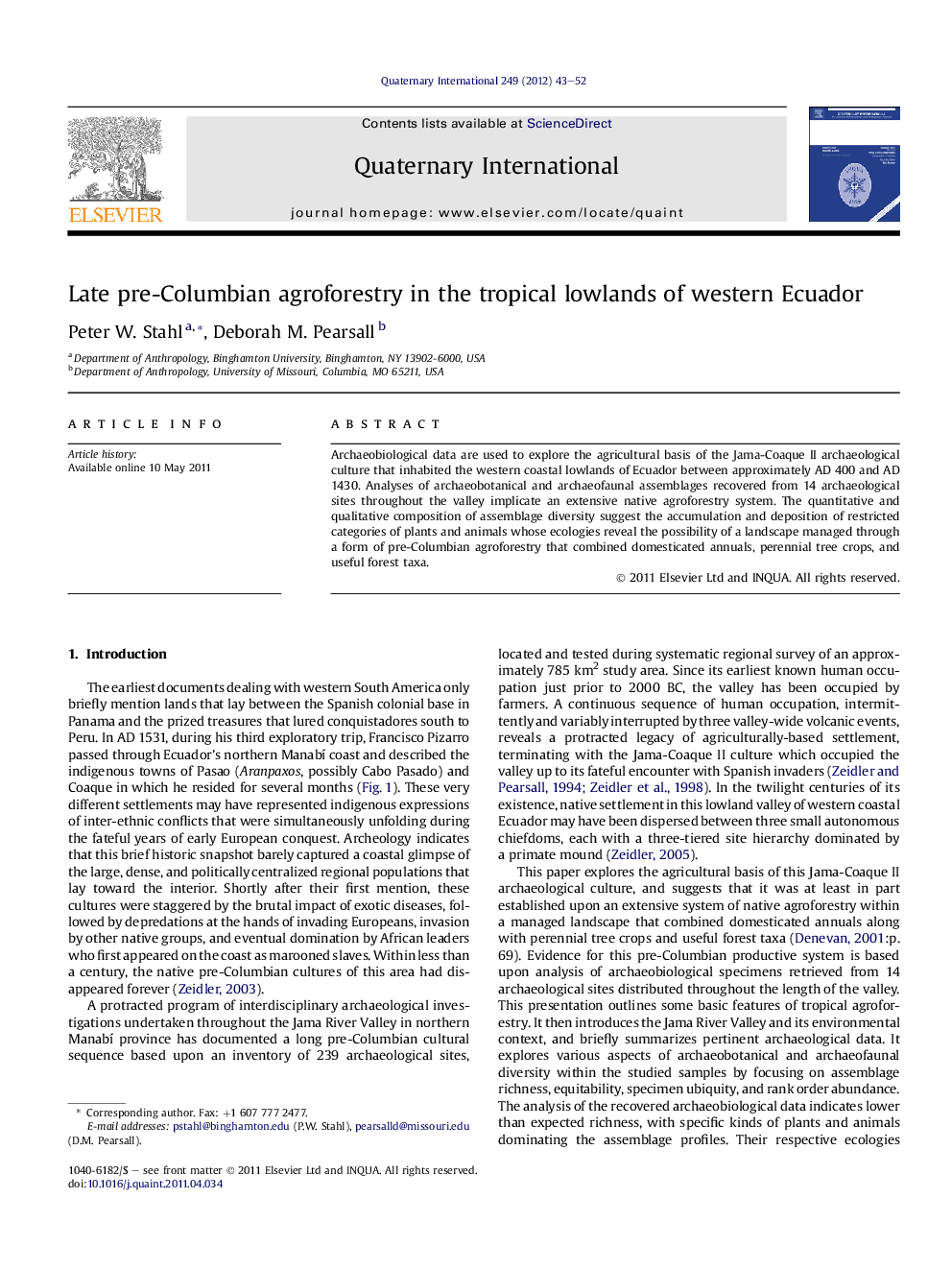| Article ID | Journal | Published Year | Pages | File Type |
|---|---|---|---|---|
| 7453062 | Quaternary International | 2012 | 10 Pages |
Abstract
Archaeobiological data are used to explore the agricultural basis of the Jama-Coaque II archaeological culture that inhabited the western coastal lowlands of Ecuador between approximately AD 400 and AD 1430. Analyses of archaeobotanical and archaeofaunal assemblages recovered from 14 archaeological sites throughout the valley implicate an extensive native agroforestry system. The quantitative and qualitative composition of assemblage diversity suggest the accumulation and deposition of restricted categories of plants and animals whose ecologies reveal the possibility of a landscape managed through a form of pre-Columbian agroforestry that combined domesticated annuals, perennial tree crops, and useful forest taxa.
Related Topics
Physical Sciences and Engineering
Earth and Planetary Sciences
Geology
Authors
Peter W. Stahl, Deborah M. Pearsall,
